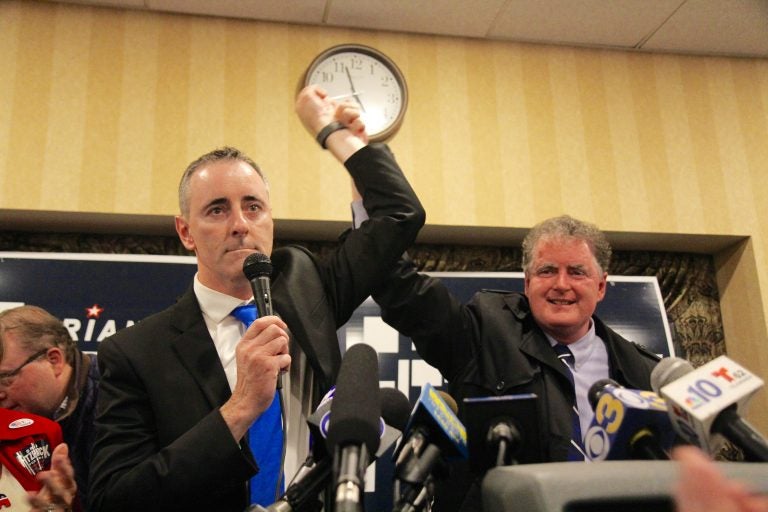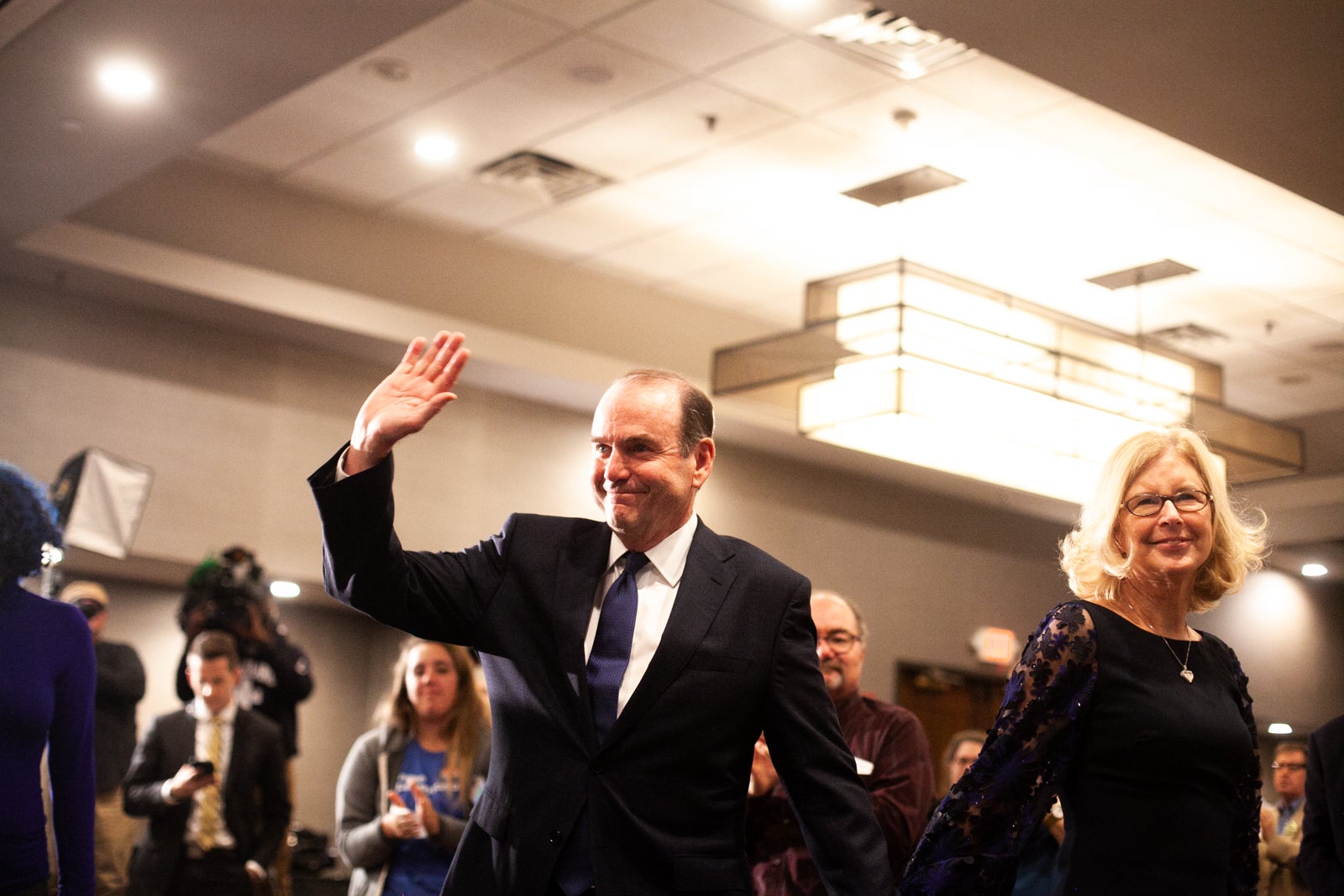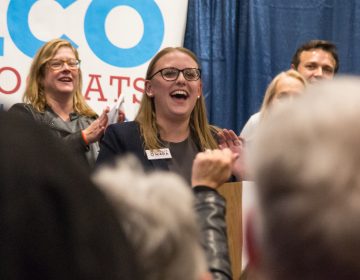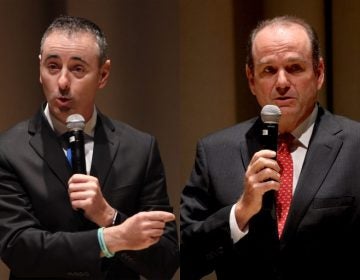Money flooded Pa. congressional races, but didn’t necessarily make the difference

Brian Fitzpatrick celebrates his reelection with his brother, and former congressman, Mike Fitzpatrick. (Kimberly Paynter/WHYY)
Candidates for Pennsylvania’s U.S. Senate and congressional seats and their supporters spent $100.7 million in this year’s midterm election, according to the latest filings.
In most cases, candidates with more financial support found victory.
Two races were exceptions to that trend.
Incumbent Republican Brian Fitzpatrick held off Democratic challenger Scott Wallace to win the heavily contested and lucrative seat in Pa.’s 1st Congressional District. Over $27 million was spent on the Bucks County race including $13.5 million in independent expenditures from political action committees.
All told, Wallace’s support cleared Fitzpatrick’s by about $1 million.

Chris Borick, director of the Muhlenberg College Institute of Public Opinion, says that despite Wallace raising more money, “candidates still matter.”
“You had an incumbent who was fairly popular in his own district. He doesn’t have to do as much in terms of name recognition, building himself up,” Borick says. “So, sometimes, even if you’re outspent and you’re in a generally good position, you can survive a challenger spending a lot more money. In this case, Scott Wallace did spend more. But certainly, Rep. Fitzpatrick also spent considerable amounts of money.”
Fitzpatrick won re-election by 2 percent.
In the 8th District, incumbent Democrat Matt Cartwright was outspent by Republican challenger John Chrin, but also won re-election. Chrin spent $300,000 more than Cartwright on the race, but Cartwright won by 9 percent.
“Matt Cartwright’s a very well-known entity in the heart of his district,” Borick says. “[Chrin] had to spend a lot to even introduce himself to voters in the district.”
Borick says one of most surprising developments in Pa.’s congressional contests was the imbalance in the 7th District. Democrat Susan Wild benefitted from $4.2 million in spending, compared to $3.5 million for Republican challenger Marty Nothstein.
Wild won the Lehigh Valley seat by 11%.
“That disparity struck me in a race that a lot of individuals going into the year thought would be much more competitive,” he said.
In the senate race, incumbent Bob Casey Jr. benefitted from $11 million more in total spending than his challenger, U.S. Congressman Lou Barletta.
Casey won the race easily by 13 percent.
In total, Democrats spent $20 million more than Republicans on the senate and congressional races this cycle, helping them gain three seats in the party’s successful bid to gain control of the U.S. House.
WHYY is your source for fact-based, in-depth journalism and information. As a nonprofit organization, we rely on financial support from readers like you. Please give today.






